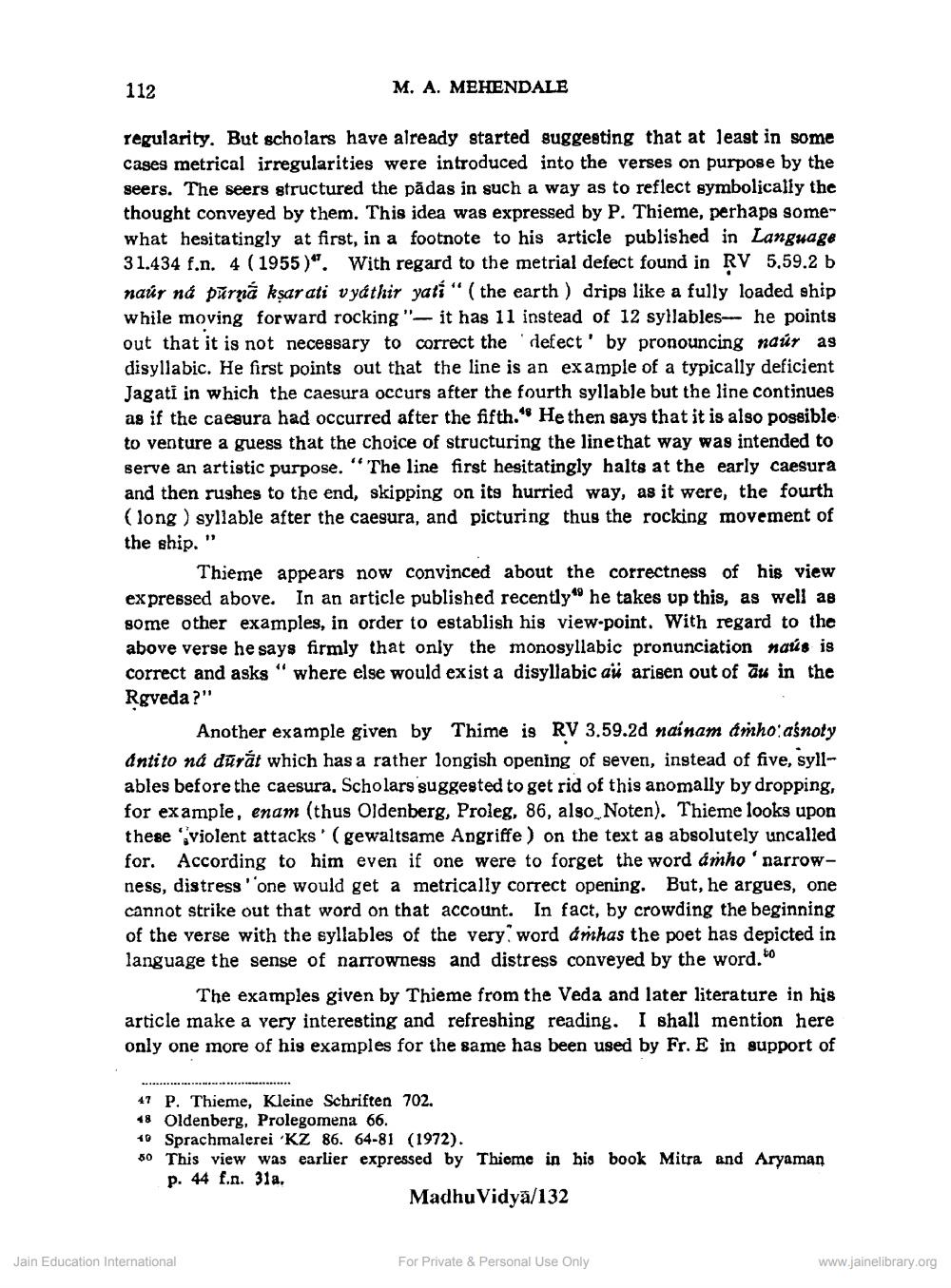________________
112
M. A. MEHENDALE
regularity. But scholars have already started suggesting that at least in some Cases metrical irregularities were introduced into the verses on purpose by the seers. The seers structured the pădas in such a way as to reflect symbolically the thought conveyed by them. This idea was expressed by P. Thieme, perhaps some what hesitatingly at first, in a footnote to his article published in Language 31.434 f.n. 4 (1955)". With regard to the metrial defect found in RV 5.59.2 b naúr ná půrná kşar ati vyáthir yatí“ ( the earth ) drips like a fully loaded ship while moving forward rocking"- it has 11 instead of 12 syllables-- he points out that it is not necessary to correct the defect' by pronouncing naúr as disyllabic. He first points out that the line is an example of a typically deficient Jagati in which the caesura occurs after the fourth syllable but the line continues as if the caesura had occurred after the fifth." He then says that it is also possible to venture a guess that the choice of structuring the line that way was intended to serve an artistic purpose. " The line first hesitatingly halts at the early caesura and then rushes to the end, skipping on its hurried way, as it were, the fourth (long ) syllable after the caesura, and picturing thus the rocking movement of the ship."
Thieme appears now convinced about the correctness of his view expressed above. In an article published recently he takes up this, as well as some other examples, in order to establish his view.point. With regard to the above verse he says firmly that only the monosyllabic pronunciation naús is correct and asks " where else would exist a disyllabic aü arisen out of āu in the Rgveda?"
Another example given by Thime is RV 3.59.2d nainam ánho aśnoty antito ná dūrát which has a rather longish opening of seven, instead of five, syllables before the caesura. Scholars suggested to get rid of this anomally by dropping, for example, enam (thus Oldenberg, Proleg, 86, also Noten). Thieme looks upon these violent attacks (gewaltsame Angriffe) on the text as absolutely uncalled for. According to him even if one were to forget the word amho'narrowness, distress ''one would get a metrically correct opening. But, he argues, one cannot strike out that word on that account. In fact, by crowding the beginning of the verse with the syllables of the very word anhas the poet has depicted in language the sense of narrowness and distress conveyed by the word.co
The examples given by Thieme from the Veda and later literature in his article make a very interesting and refreshing reading. I shall mention here only one more of his examples for the same has been used by Fr. E in support of
47 P. Thieme, Kleine Schriften 702. 48 Oldenberg, Prolegomena 66. 10 Sprachmalerei 'KZ 86. 64-81 (1972). 50 This view was earlier expressed by Thieme in his book Mitra and Aryaman P. 44 f.n. 31a.
Madhu Vidyā/132
Jain Education International
For Private & Personal Use Only
www.jainelibrary.org




